Intro
Discover 5 celiac-friendly foods, including gluten-free grains, to manage celiac disease symptoms, promoting a healthy gut and balanced diet with nutritious alternatives.
The importance of a gluten-free diet cannot be overstated for individuals suffering from celiac disease, a chronic autoimmune disorder that causes the immune system to react to gluten. Gluten is a protein found in wheat, barley, and rye, and its consumption can lead to damage in the small intestine and malabsorption of essential nutrients. Managing celiac disease requires a strict adherence to a gluten-free diet, which can be challenging due to the ubiquity of gluten in many food products. Understanding which foods are safe to consume and which should be avoided is crucial for maintaining health and preventing complications.
For individuals with celiac disease, navigating the world of food can be daunting. The risk of cross-contamination with gluten is high, and even small amounts of gluten can trigger an immune response. However, with the right knowledge and strategies, it is possible to enjoy a wide variety of delicious and nutritious foods. From naturally gluten-free grains like rice and quinoa to gluten-free flours made from almonds and coconut, the options are vast. Moreover, many food manufacturers now offer gluten-free alternatives to traditional products, making it easier than ever to follow a gluten-free diet.
The key to successfully managing celiac disease through diet is education and awareness. Knowing which foods are inherently gluten-free and which can be safely consumed in their gluten-free forms is essential. Furthermore, understanding the risks of cross-contamination and how to mitigate them can significantly reduce the anxiety associated with eating. Whether dining out, shopping for groceries, or cooking at home, being informed about gluten-free options empowers individuals with celiac disease to take control of their health and well-being.
Introduction to Gluten-Free Foods
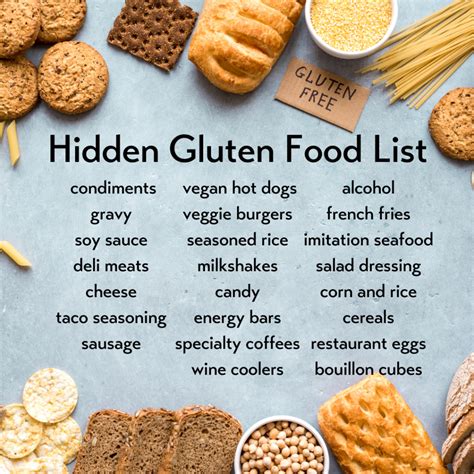
Gluten-free foods are those that do not contain gluten, a protein found in wheat, barley, and rye. These foods can be naturally gluten-free, such as fruits, vegetables, meats, and fish, or they can be processed to remove gluten. The demand for gluten-free products has led to a significant increase in the variety and quality of gluten-free foods available in the market. From gluten-free bread and pasta to gluten-free beers and baked goods, there are numerous options for those who need to avoid gluten.
Benefits of a Gluten-Free Diet
A gluten-free diet offers several benefits, not only for individuals with celiac disease but also for those with non-celiac gluten sensitivity (NCGS) or who choose to follow a gluten-free diet for other health reasons. The benefits include: - Reduced inflammation and immune system activation - Improved digestion and nutrient absorption - Relief from symptoms such as bloating, abdominal pain, and diarrhea - Potential weight loss and improved overall healthNaturally Gluten-Free Foods
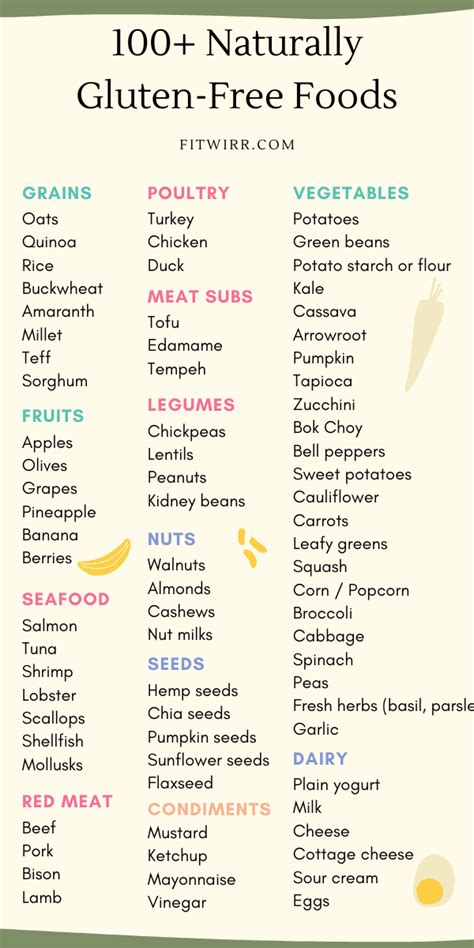
Naturally gluten-free foods are those that do not contain gluten by their nature. These include:
- Fruits: All fruits are gluten-free, making them an excellent addition to a gluten-free diet.
- Vegetables: Like fruits, all vegetables are naturally gluten-free.
- Meats: Fresh meats, including beef, pork, chicken, and fish, are gluten-free.
- Grains: Rice, quinoa, corn, and millet are examples of grains that are naturally gluten-free.
- Legumes: Beans, lentils, and peas are not only gluten-free but also rich in protein and fiber.
Gluten-Free Grains
For individuals who enjoy grains but need to avoid gluten, there are several gluten-free options available. These include: - Rice: Both white and brown rice are gluten-free. - Quinoa: Often referred to as a superfood, quinoa is not only gluten-free but also a complete protein. - Corn: Fresh corn and corn products like cornmeal and polenta are gluten-free. - Millet: A small-grained cereal that is gluten-free and rich in nutrients. - Teff: An ancient grain native to Ethiopia, teff is gluten-free and high in fiber and iron.Processed Gluten-Free Foods
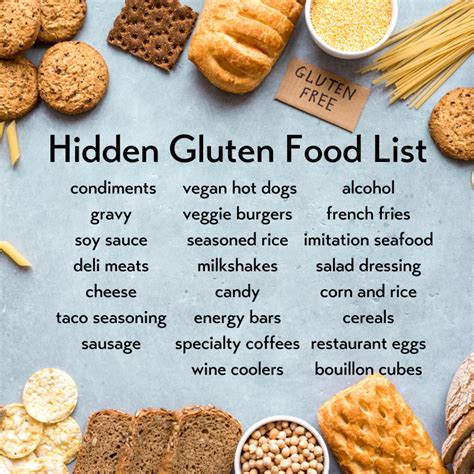
Processed gluten-free foods are products that have been manufactured to be free from gluten. These can range from gluten-free flours and baking mixes to ready-to-eat meals and snacks. When shopping for processed gluten-free foods, it's crucial to read labels carefully to ensure that the product is not only gluten-free but also safe from cross-contamination.
Gluten-Free Certification
To help consumers identify safe gluten-free products, several organizations offer gluten-free certification. These certifications, such as the Gluten-Free Certification Organization (GFCO) and the Celiac Support Association (CSA), verify that products meet certain standards for gluten content and safety. Looking for these certifications can provide an added layer of assurance when selecting processed gluten-free foods.Cooking and Preparing Gluten-Free Meals
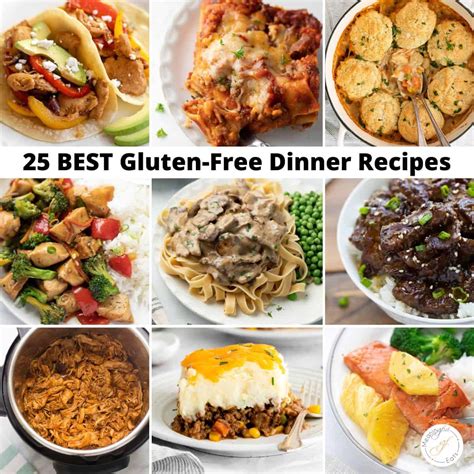
Cooking and preparing gluten-free meals can be straightforward and enjoyable, especially with the right ingredients and recipes. Here are some tips for cooking gluten-free:
- Use gluten-free flours: Almond flour, coconut flour, and rice flour are popular choices for baking.
- Choose gluten-free grains: Incorporate gluten-free grains like quinoa, rice, and corn into your meals.
- Be mindful of cross-contamination: Use separate cooking utensils and surfaces to prepare gluten-free meals to avoid cross-contamination with gluten.
- Experiment with new recipes: There are countless gluten-free recipes available online and in cookbooks, offering a wide range of flavors and cuisines to explore.
Gluten-Free Baking
Gluten-free baking can be a bit more challenging due to the absence of gluten, which provides structure and elasticity to baked goods. However, with the right combination of gluten-free flours and additives like xanthan gum, it's possible to create delicious and textured gluten-free baked goods. Some popular gluten-free baking flours include: - Almond flour: High in protein and healthy fats, almond flour is ideal for cakes, cookies, and pastries. - Coconut flour: Absorbs more liquid than traditional flour, coconut flour is best used in combination with other flours. - Rice flour: Light and delicate, rice flour is suitable for baked goods like cakes and cookies.Dining Out Gluten-Free

Dining out can be challenging for individuals with celiac disease or those who follow a gluten-free diet. However, many restaurants now offer gluten-free options, and some even have separate gluten-free menus. Here are some tips for dining out gluten-free:
- Call ahead: Inform the restaurant about your gluten-free requirements before visiting.
- Ask questions: Don't hesitate to ask your server about gluten-free options and how they are prepared.
- Choose wisely: Opt for naturally gluten-free foods like grilled meats, fish, and vegetables.
- Be cautious of cross-contamination: Ensure that the restaurant takes steps to avoid cross-contamination with gluten.
Gluten-Free Travel
Traveling while following a gluten-free diet requires some planning but can be managed with ease. Here are some tips for gluten-free travel: - Research: Look for gluten-free restaurants and cafes at your destination. - Pack snacks: Bringing gluten-free snacks can help when options are limited. - Inform your hotel: If you're staying in a hotel, inform them about your dietary requirements. - Learn key phrases: Knowing how to say "gluten-free" in the local language can be very helpful.Conclusion and Future Directions
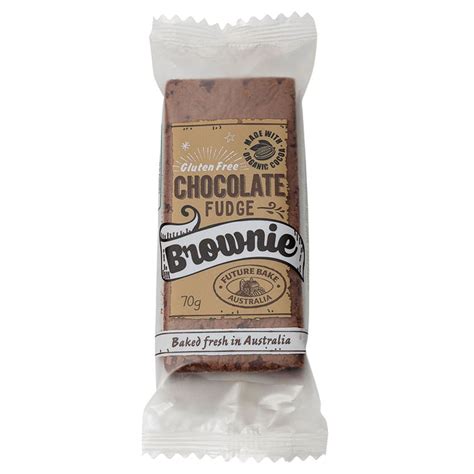
In conclusion, managing celiac disease and following a gluten-free diet requires a deep understanding of gluten-free foods, careful planning, and awareness of the risks of cross-contamination. With the increasing availability of gluten-free products and the growing awareness of celiac disease and gluten sensitivity, the future looks promising for those who require a gluten-free diet. As research continues to uncover more about gluten-related disorders, we can expect even more innovative gluten-free products and strategies to emerge.
Final Thoughts
Embracing a gluten-free lifestyle can be a journey of discovery, filled with new flavors, recipes, and connections with others who share similar dietary needs. By staying informed, being proactive, and supporting one another, individuals with celiac disease and those who choose to follow a gluten-free diet can thrive and enjoy a healthy, balanced lifestyle.What is celiac disease?
+Celiac disease is a chronic autoimmune disorder that causes the immune system to react to gluten, leading to damage in the small intestine and malabsorption of nutrients.
What foods are naturally gluten-free?
+Naturally gluten-free foods include fruits, vegetables, meats, fish, and grains like rice, quinoa, and corn.
How can I ensure that my gluten-free diet is balanced and nutritious?
+Consult with a dietitian or healthcare provider to ensure you're getting all the necessary nutrients. Include a variety of gluten-free whole foods, and consider supplements if recommended.
We invite you to share your experiences, tips, and favorite gluten-free recipes with us. Whether you're newly diagnosed with celiac disease or have been following a gluten-free diet for years, your insights can help others navigate their own gluten-free journey. Let's connect and support one another in embracing a healthy, gluten-free lifestyle.
